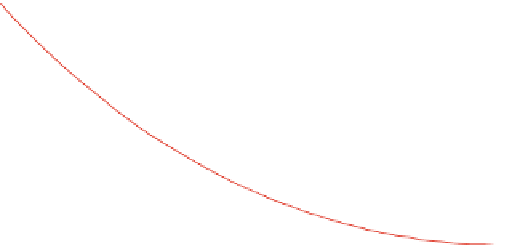Environmental Engineering Reference
In-Depth Information
r
1
4
Pe
2
1
2
Pe
m
1
;
2
¼
þ Da
2
(5.19)
If the first Damk
€
ohler number for the fluid phase is defined by
Da
1
¼
l
L=v
, the
two
-values can also be expressed as function of
Pe
and
Da
1
. Using the identity
Da
2
¼ Pe Da
1
, one obtains
m
m
1
and
m
2
as functions of
Pe
and
Da
1
:
r
1
4
Pe
2
1
2
Pe
m
1
=
2
¼
þ Pe Da
1
(5.20)
The solution with vanishing concentration gradient at depth
L
can be expressed
by the formula:
c
ð
x
Þ
c
in
¼
m
2
exp
m
ðÞ
exp
m
1
ðÞ
m
1
exp
m
ðÞ
exp
ðÞ
m
2
(5.21)
m
2
exp
m
ðÞ
m
1
exp
m
ðÞ
A special case of (
5.21
)is
p
p
p
p
ð
ð
ð
ð
c
ð
x
Þ
c
in
¼
exp
Da
2
Þ
exp
Da
2
xÞþ
exp
Da
2
Þ
exp
Da
2
xÞ
ð
p
ð
p
(5.22)
exp
Da
2
Þþ
exp
Da
2
Þ
1
0.9
0.8
0.7
Da
2
=8
Da
2
=4
Da
2
=2
Da
2
=1
Da
2
= 0.5
Da
2
= 0.
25
Da
2
= 0.
12
5
0.6
0.5
0.4
0.3
0.2
0.1
0
0.2
0.4
0.6
0.8
1
x/L [-]
Fig. 5.3
Concentration profiles in the case of diffusion and decay with constant parameters
D
and
l
; as function of dimensionless second Damk
ohler number
Da
2
€




















































































































































































































































































































































